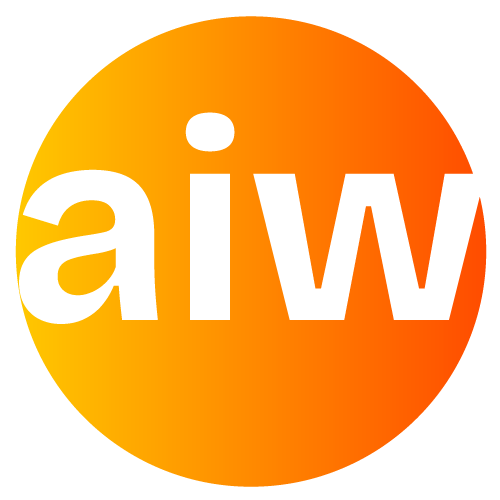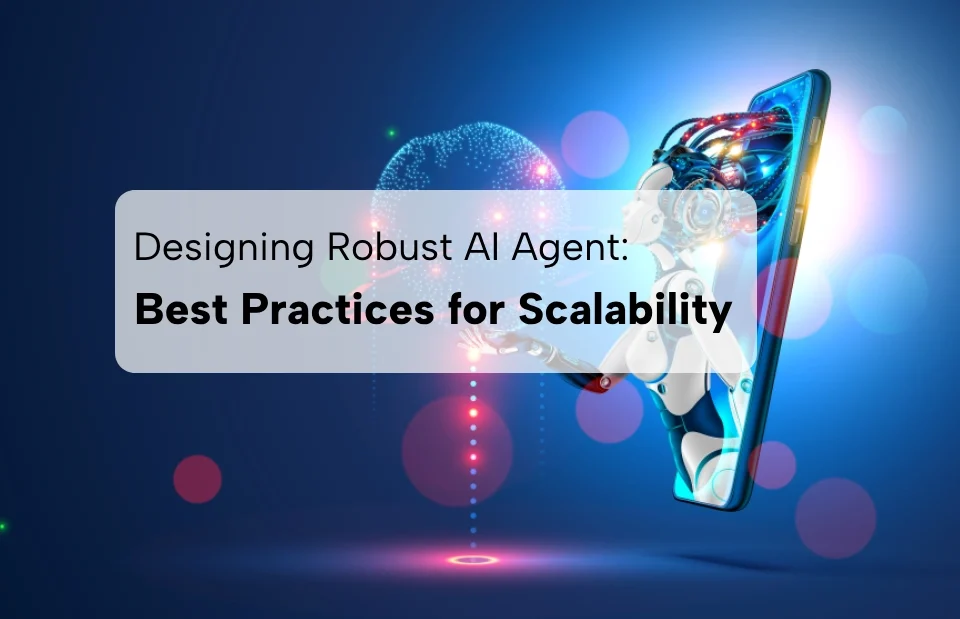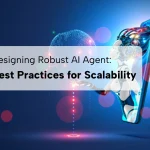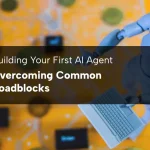In today’s business environment, staying competitive demands more than speed. It requires intelligent execution across every department. That’s why CXOs are now prioritizing enterprise workflow automation—not just as a technology initiative, but as a business transformation lever.
This guide is written for executives who are navigating complex operations and looking to make automation a strategic advantage. We provide a practical roadmap, real-world challenges, and frameworks used by successful organizations.
Key Takeaways
- Framework for planning automation rollouts across enterprise departments
- Common challenges in automation implementation and how to avoid them
- Real-world use cases for finance, healthcare, and operations
- Evaluation criteria for selecting the right workflow automation platform
- The role of AI agents in modern digital workflow automation
- How AI Workfllow supports enterprise automation with agentic AI
- RPA vs. workflow automation: what’s right for your business?
- Building organisational buy-in through change management
Table Of Contents
- Why CXOs Should Prioritize Enterprise Workflow Automation
- A Proven Plan: 6-Phase Enterprise Automation Rollout
- Common Pitfalls faced during enterprise workflow automation and How to Avoid Them
- RPA vs. AI Workflow Automation: What’s Right for You?
- How AI Workfllow Supports CXOs
- Final Thought: Automation Is a Leadership Priority
- FAQs: Enterprise Workflow Automation
Why CXOs Should Prioritize Enterprise Workflow Automation
Manual workflows create friction in execution. They delay decisions, reduce visibility, and force expensive workarounds. According to McKinsey, companies lose up to 20% of their productivity due to inefficient workflows.
More importantly, they limit strategic agility. As CXOs seek scalability, automation becomes a board-level priority. Enterprise workflow automation addresses:
- Cross-functional misalignment
- Delayed customer delivery
- Inconsistent compliance practices
- Inability to scale processes without hiring
In our experience working with CXOs across industries, automation projects often fail when treated solely as a tech initiative. Success starts when business outcomes drive automation, not the other way around.
A Proven Plan: 6-Phase Enterprise Automation Rollout
Phase 1: Strategic Process Identification
This first phase is about separating signal from noise. CXOs must guide their teams in identifying the highest-leverage processes that align with strategic goals. Focus on:
- Customer-facing bottlenecks (e.g., onboarding delays)
- Financial processes prone to errors (e.g., Accounts Payable/ Accounts Receivable approvals)
- Repetitive internal operations (e.g., access provisioning)
Use process discovery tools, stakeholder interviews, and cross-functional mapping to evaluate value vs. complexity. Prioritize workflows where automation can unlock measurable outcomes.
Phase 2: Stakeholder Alignment and Ownership
Cross-functional automation initiatives are vulnerable to power dynamics. Clarity of ownership is crucial.
Steps include:
- Form an automation steering committee with business and IT leaders
- Assign executive sponsors to each automation stream
- Define “what success looks like” for every stakeholder
Failing to align early results in miscommunication and tech pushback. A shared vision is your governance foundation.
Phase 3: Process Redesign Before Automation
Designing automation around broken processes results in expensive failures. This phase is about reengineering workflows before digitization.
Tactics include:
- Remove non-value-adding steps
- Rationalize exception paths
- Standardize handoff protocols and escalation logic
Bring in operations, compliance, and customer service leads to co-design the new blueprint. Their insights will preempt failure modes.
Phase 4: Technology Platform Selection
Platform selection should be use-case driven, not vendor-driven. Evaluate platforms against a functional requirements matrix.
Consider:
- Native integration with existing systems (CRM, ERP, HRMS)
- Real-time analytics, alerting, and reporting
- Customization vs. configuration balance
- Availability of technical and user support post-go-live
Popular AI Workflow Automation Platforms to Consider
UiPath – Known for robotic process automation (RPA) with integrated AI for decision-making tasks and document understanding.
Microsoft Power Automate (with Copilot) – Offers AI-assisted automation with seamless integration into Microsoft 365, Dynamics, and other enterprise tools.
Workato – A low-code/no-code integration and automation platform with AI-based data mapping and decision logic capabilities.
Automation Anywhere – Combines traditional RPA with intelligent document processing and AI-powered bots.
Cognigy – An AI-first automation platform focused on customer and employee experience workflows using conversational AI agents.
Shortlist 2–3 platforms and run real pilots, not demo environments.
Phase 5: Pilot, Train, Iterate
The pilot stage reveals operational friction and adoption issues. Run a contained experiment.
Best practices:
- Select one well-documented, high-impact workflow
- Train users with job-specific use cases
- Track qualitative and quantitative feedback (e.g., time savings, skipped steps)
After the pilot, hold a retro session. Document learnings and standardize templates for the next rollouts.
Phase 6: Scale with AI and Governance
Once pilots prove their value, it’s time to build enterprise-wide scale.
Scale smart:
- Develop an enterprise automation playbook
- Enable AI to handle predictive routing, exception handling, and context-aware decisioning
- Establish continuous improvement loops (via metrics dashboards and stakeholder reviews)
Governance must be embedded with:
- Clear automation request/change protocol
- Automation health monitoring
- Role-based access and rollback capability
Common Pitfalls faced during enterprise workflow automation and How to Avoid Them
-
Automating Without Process Redesign
This leads to technical debt in automation. Instead of solving root inefficiencies, the organization ends up replicating them at scale. Teams should run current-state mapping workshops before starting development.
-
Low User Adoption
When frontline staff are excluded from planning, adoption fails. Resistance builds. Proactively involve users in pilot testing and give them co-ownership over automation iterations.
-
Poor Integration Planning
Disconnected systems fragment data and increase manual rework. Integration complexity should be a core selection criterion, not an afterthought.
-
No Governance Model
Without policy and process control, automations become liabilities. Versioning, rollback, approval workflows, and exception handling must be defined upfront.
-
Over-Customization During Pilot
A pilot is meant to validate the concept, not achieve perfection. Trying to accommodate every edge case results in bloated workflows and rollout fatigue.
-
Lack of Communication Strategy
Automation affects how people work. If not explained clearly, even helpful changes are perceived as threats. CXOs must own the narrative and show how automation empowers—not replaces—teams.
RPA vs. AI Workflow Automation: What’s Right for You?
Many CXOs confuse robotic process automation (RPA) with enterprise-grade AI workflow automation. While both aim to reduce manual work, they differ significantly in architecture and scalability.
RPA is designed to mimic human actions at the UI level—like clicking buttons and reading PDFs. It’s ideal for legacy systems with no APIs. However, it breaks easily and is hard to scale.
Workflow automation is system-driven. It integrates platforms, applies logic across processes, and supports real-time data exchange. It’s the better choice for organizations building scalable, future-ready infrastructure.
| Feature | RPA | AI Workflow Automation |
| Scope | Repetitive, rule-based tasks | End-to-end business processes |
| Integration | UI-based scripts | API/native system integration |
| Intelligence | Limited | AI-capable and data-driven |
| Scalability | Complex | Designed for scale |
| Maintenance | High (scripts break easily) | Lower, platform-based changes |
For back-office task bots, RPA works well. For scalable enterprise transformation, workflow automation is a better long-term investment.
How AI Workfllow Supports CXOs
AI Workfllow is a specialized AI-first Tech Services firm that partners with enterprises to develop, implement, and scale agentic AI infrastructure. We do not offer a prebuilt product. Instead, we deliver custom-built solutions rooted in deep process understanding.
Our strength lies in bridging business goals with intelligent execution. We bring together workflow experts, AI engineers, and change management consultants to deliver lasting impact, not just functional automation.
Our Consulting Approach:
- CXO discovery workshops to align on outcomes
- AI architecture design tailored to operations, data privacy, and compliance
- Agentic AI development with real-world constraints and continuous learning
- End-to-end execution from proof-of-concept to scaled deployment
Industry Examples:
- Finance: Automated compliance checks saved 900+ hours/year
- Healthcare: Claim auto-triage reduced manual load by 78%
- Manufacturing: Order-to-ship time dropped 65% via ERP-CRM integrations
“AI Workfllow didn’t just automate—we restructured how our operations think and respond.” — COO, Mid-East Financial Firm
Final Thought: Automation Is a Leadership Priority
Automation is no longer a back-office efficiency play. For modern CXOs, it’s a boardroom mandate. The ability to scale, adapt, and respond to dynamic business conditions hinges on one critical question: Are your workflows working for you, or against you?
Enterprise AI workflow automation empowers organizations to transform how workflows across departments, tools, and teams. It unlocks speed, precision, and transparency, without sacrificing governance. But more importantly, it frees your people to focus on innovation and strategy rather than chasing processes.
Successful CXOs don’t just invest in automation tools—they architect intelligent systems that align with company culture, regulatory context, and customer expectations. It’s not about technology alone. It’s about operational foresight.
At AI Workfllow, we don’t believe in one-size-fits-all platforms. We collaborate with executive teams to map high-impact outcomes and build tailored automation infrastructure powered by agentic AI. Whether you’re rethinking internal operations, accelerating compliance, or unlocking new service models, we help you automate with intention.
Let’s build a future-ready enterprise—together. Book a 30-minute strategy call with AI Workfllow. No sales deck. Just intelligent discussion.
FAQs: Enterprise Workflow Automation
What is enterprise workflow automation?
Enterprise workflow automation refers to the digitization and orchestration of entire business processes across functions using technology. It removes manual tasks, eliminates handoffs, and applies rules and logic to ensure consistency and speed. These workflows can span departments like HR, finance, and customer service.
What makes a good workflow automation platform?
It should support API integrations, allow low-code configuration, offer real-time reporting, and enforce governance. Platforms that are scalable, user-friendly, and align with both IT and business needs perform best in enterprise environments.
How does AI improve workflow automation?
AI enables workflows to go beyond static logic. It can classify documents, make context-aware decisions, escalate issues based on predictive models, and even understand natural language. This makes automation smarter, faster, and more resilient.
What are the common challenges in implementation?
Some of the most cited include unclear ownership between business and IT, insufficient training, integration complexity with legacy systems, and cultural resistance. Successful automation projects always start with change management planning.
How long before we see ROI?
Most enterprises begin to see ROI within 6 to 12 months post-launch, depending on process complexity and scale. According to Deloitte, mature automation programs report efficiency gains of 30–40%.
Can legacy systems be automated?
Yes. Most modern workflow automation platforms support legacy systems via connectors, API gateways, or even through hybrid RPA + automation layers to enable a transition path.
What role does AI Workfllow play?
AI Workfllow is your partner—not a platform. We design, develop, and implement intelligent workflows using agentic AI. We collaborate with your internal teams to align solutions to business goals, ensuring long-term success and scalability.
Explore how intelligent automation can fit into your CXO agenda. Talk to an expert at AI Workfllow today.

Dhruv Dholakia has spent over a decade helping enterprises streamline operations through workflow automation and digital transformation. With a strong belief in building purposeful tech, he now focuses on the next frontier—custom AI solutions and Agentic AI. For Dhruv, AI isn’t just a buzzword; it’s a tool to solve real-world problems and create lasting impact. He’s passionate about making AI accessible, responsible, and truly useful for people, teams, and businesses navigating today’s fast-changing world.





